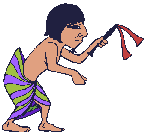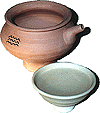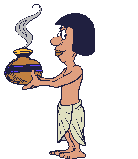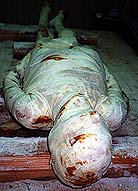



amulet-A charm worn to bring good luck or to protect someone from harm.
archaeologist- A person who studies ancient peoples by digging up their tools and the remains of buildings.
architect- A person who designs buildings.

Book of the Dead-his was written on a papyrus scroll and placed in or near the coffin. Based on the Pyramid Texts, but intended for use by commoners as well as royalty, it tells the dead person how to overcome all dangers and successfully reach the Kingdom of Osisris.
canopic jars- Jars in which an Egyptian mummy's internal organs were stored. In the Middle Kingdom the lids had human heads; by the New Kingdom the lids had human heads; by the New Kingdom they were made in the form of the heads of the four sons of Horus-man, baboon, jackal, and hawk.

capstone- The topmost stone of a pyramid, itself pyramid shaped.
cartouche- An oval frame drawn around the name of a king or queen. It comes from the hieroglyphic sign for protection.

dynasty- A line of rulers, members of the same family who inherit the throne, one from another.
embalm- To preserve a body from decay.
hieroglyphs- Picture writing.

mummy- An embalmed body. The word comes from the Arabic mumiya, meaning pitch. Sokme mummies had turned black, so it was thought they had been covered in pitch.

natron- A natural salt.
obelisk- A tall square stone pillar with a pyramid -shaped top.
papyrus- A reed. The Egyptians sliced the stem into strips and press the together to make a kind of paper.
pharaoh- It referred to the king.

sarcophagus- The outer coffin, made of stone, in which a wooden coffin was laid.
scribe- In ancient times, a person who could write.
sphinx- A form of the ancient Egyptian sun god. It has the body of a lion and the head of the reigning king or a ram. The Giza Sp0hinx has the face of King Khafre.
tomb-A grave with an elaborate building over it, or a number of rooms cut into the rock.
 |
|